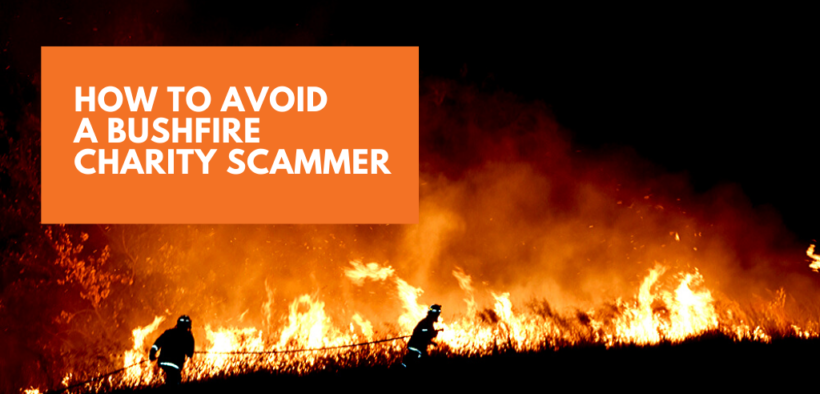Generosity gets to its peak especially in times of crisis. But this is often taken advantaged off if you are unaware of how to protect yourself from charity scam. For this, we’ve round up a few reminders to help you avoid getting into this rough situation.
- Contact bank immediately if there is a tiniest bit of intuition that you shared sensitive bank account details to a dodgy person or organisation. Report this incident to the Australian Charities and Not-for-profit Commission via the charity portal and check Scam Watch for additional information.
- Never give your credit card details to anyone you just met or whose group cannot be verified. Always ask the person who approached you to provide details about the charity and what specific project your money will be used for.
- Check for news articles or websites that have legitimate call-to-action relating to the bush fire. There are number of organisations deploying relief to provide food and water, along with emotional and practical support. One is The Salvation Army whose Bushfire Disaster Appeal received an initial payment of $500,000 from Woolworths and another $50,000 from NSW government. Another is Redcross Australia who offer psychological first aid and are helping reconnect families in Bega and South-West Victoria. Aside from the donation platform they have, they also launched the Get Prepared app, where you design your own emergency plan and keep it close at hand.
Meanwhile, ACNC reminds fundraisers there are potential pitfalls for people who wish to fundraise.
“Charities play an important role in supporting the victims of natural disasters,” said ACNC Commissioner the Hon Dr Gary Johns. “However, people starting up disaster charities can inadvertently get into strife if they don’t understand the regulations or their obligations. Even when they are responding to emergency, charities need to keep separate personal and charity accounts and obey fundraising guidelines.”
ACNC shared these tips for safe fundraising and giving in response to drought and bushfire disasters.
- Find out whether there are any organisations that are already involved in the recovery effort. It may be beneficial to contribute to, or partner with, an organisation that already has resources in the affected area or disaster expertise, rather than setting up a new charity.
- Make sure any activities your charity undertakes are furthering the charitable purpose – the purpose for which your charity exists. Charities must only work towards their charitable purpose. If you’re unsure about what this means, contact the ACNC.
- If you wish to establish an Australian disaster relief fund (a type of deductible gift recipient (DGR)), you will need to register with the ACNC or be operated by an organisation that is registered with the ACNC. Government agencies or funds operated by a government agency do not need to be registered with the ACNC.
- The Australian Taxation Office (ATO) provides more information about establishing an Australian disaster relief fund and other categories of DGR. The ACNC will fast-track any applications that are made in response to a natural disaster.
- Check with your relevant state or territory fundraising regulator before you undertake any fundraising activity. Your charity may need register to collect charitable donations and comply with fundraising regulation.
Pearl Dy is a community manager and journalist. She is passionate about business and development particularly involving not-for-profits, charity and social entrepreneurship.

































































































































































